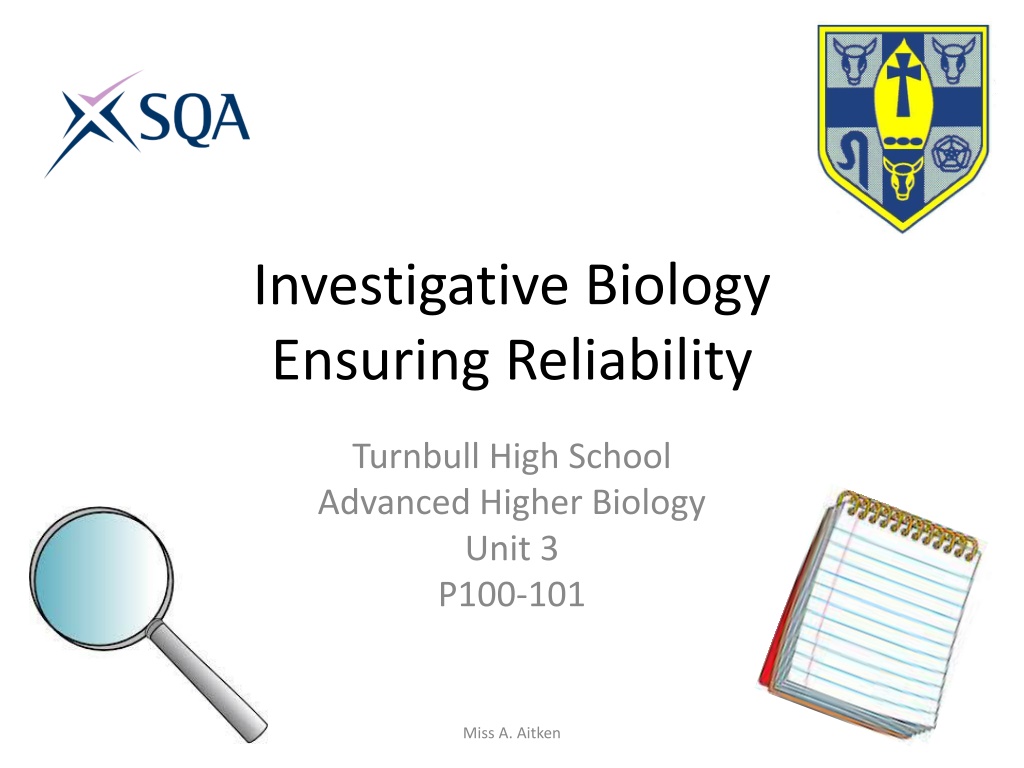Understanding Precision, Accuracy, and Reliability in Investigative Biology
Precision, accuracy, and replicates play crucial roles in ensuring reliable results in investigative biology experiments. Precision refers to the closeness of measurements, accuracy to how close they are to the actual value. Replicates involve multiple measurements within the same experiment or repeating the whole experiment for consistency. Analyzing data involves understanding error bars and confidence intervals for a comprehensive interpretation. Explore more in Turnbull High School's Advanced Higher Biology Unit 3 with Miss A. Aitken.
Download Presentation

Please find below an Image/Link to download the presentation.
The content on the website is provided AS IS for your information and personal use only. It may not be sold, licensed, or shared on other websites without obtaining consent from the author. Download presentation by click this link. If you encounter any issues during the download, it is possible that the publisher has removed the file from their server.
E N D
Presentation Transcript
Investigative Biology Ensuring Reliability Turnbull High School Advanced Higher Biology Unit 3 P100-101 Miss A. Aitken
Precision Precision is a measurement of the closeness of two or more measurements taken from the same sample. For example, if you measured the volume of a solution 10 times and get 10ml exactly every time, then your measurements are precise. Miss A. Aitken
Accuracy Accuracy is an assessment of how close your measurement is to the actual value. For example, if you measure the volume of a solution you know is 100ml and get 90ml, your measurements are not accurate. Accuracy is assessed by calibration against a known standard. Miss A. Aitken
Precision and Accuracy A student took a buffer, which she knew was pH 7, and measured the pH 4 times. The results she got are below: Attempt 1 2 3 4 Reading pH 6.8 pH 6.7 pH 6.8 pH 6.7 These results are precise but not accurate. Miss A. Aitken
Replicates Two types: Replicates are multiple measurements within the same experiment. You take many measurements and calculate an average Independent replicates are when the whole experiment is repeated again to demonstrate results are reliable and consistent. Miss A. Aitken
Analysing Data Two things to understand: - What error bars show - What a confidence interval is Both of these can be found on page 101 of the textbook. Miss A. Aitken




























